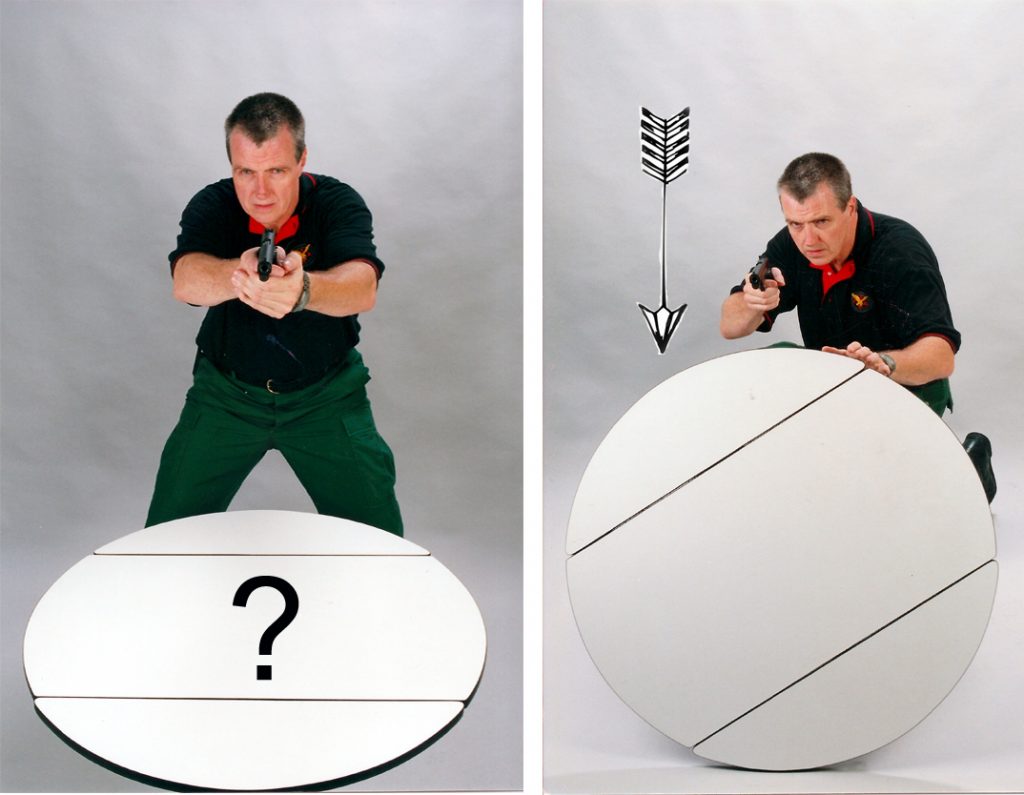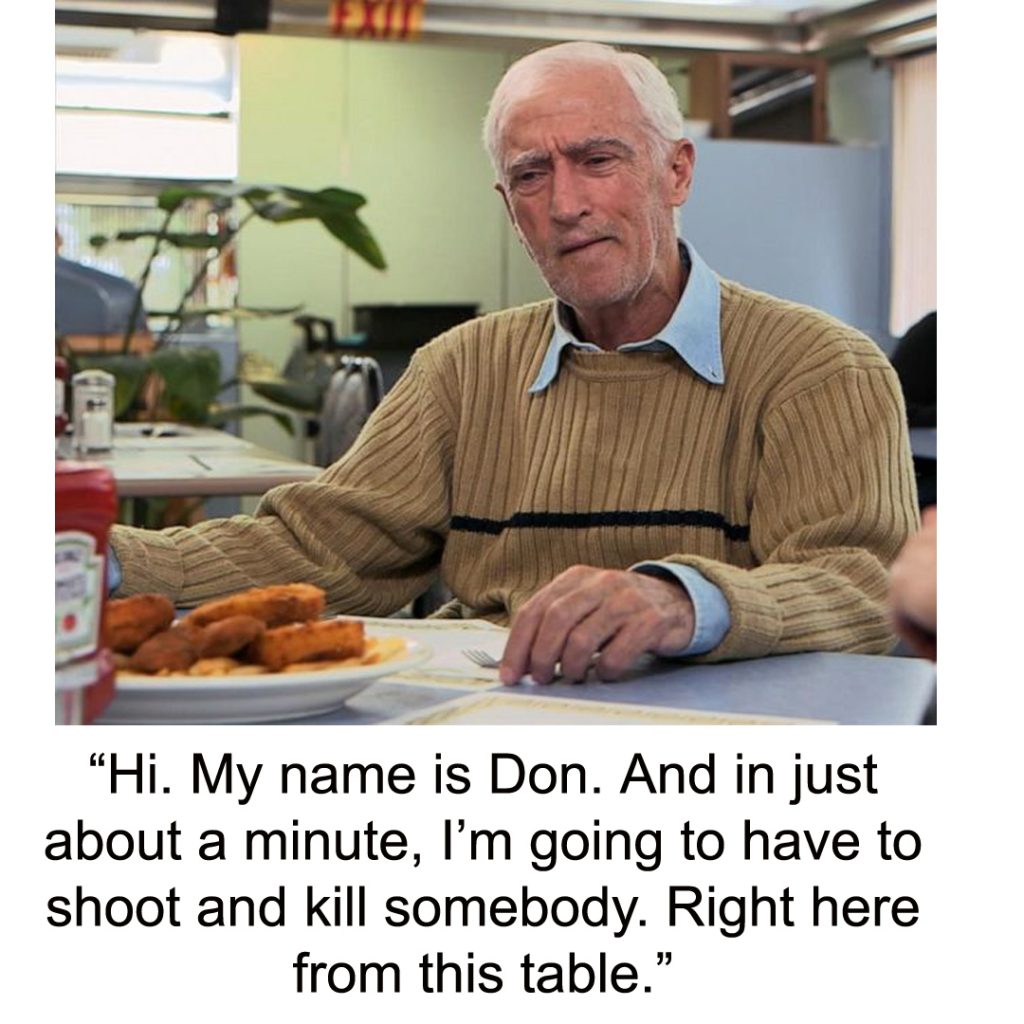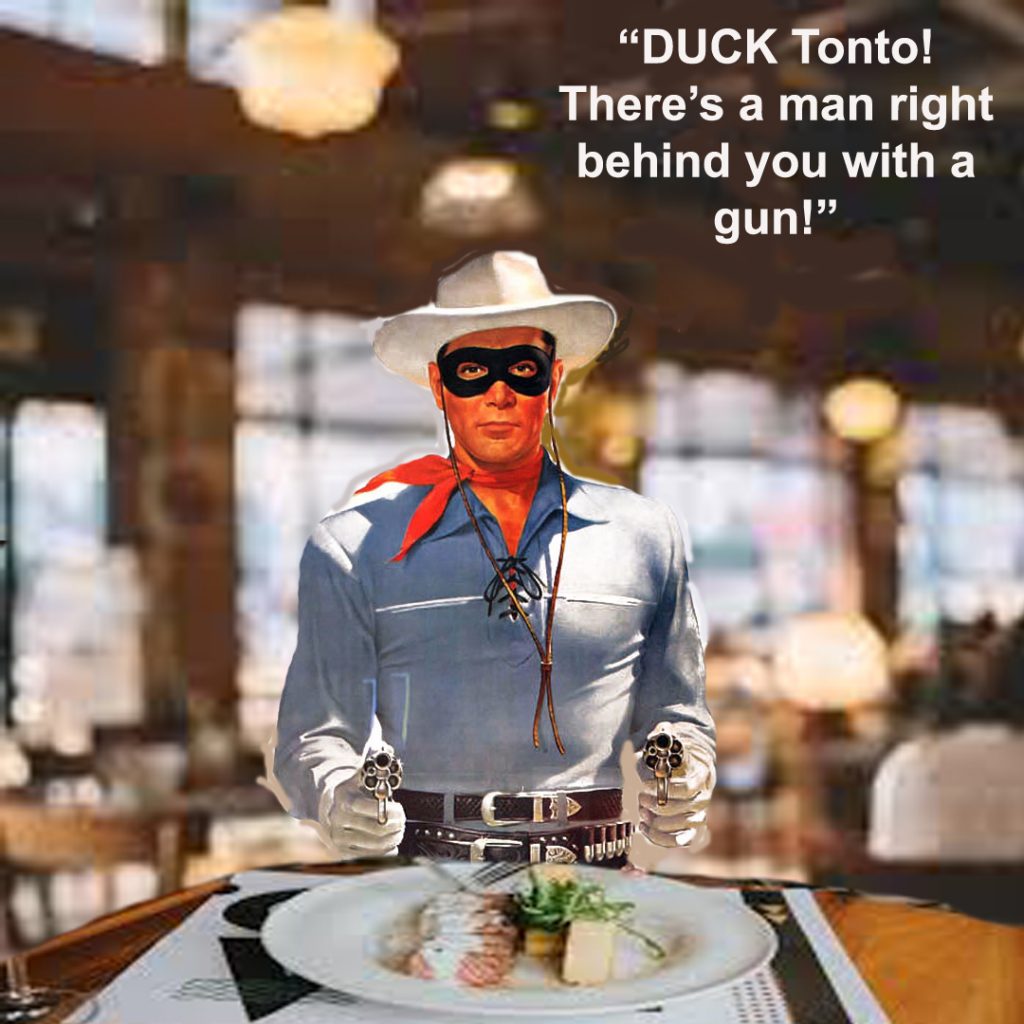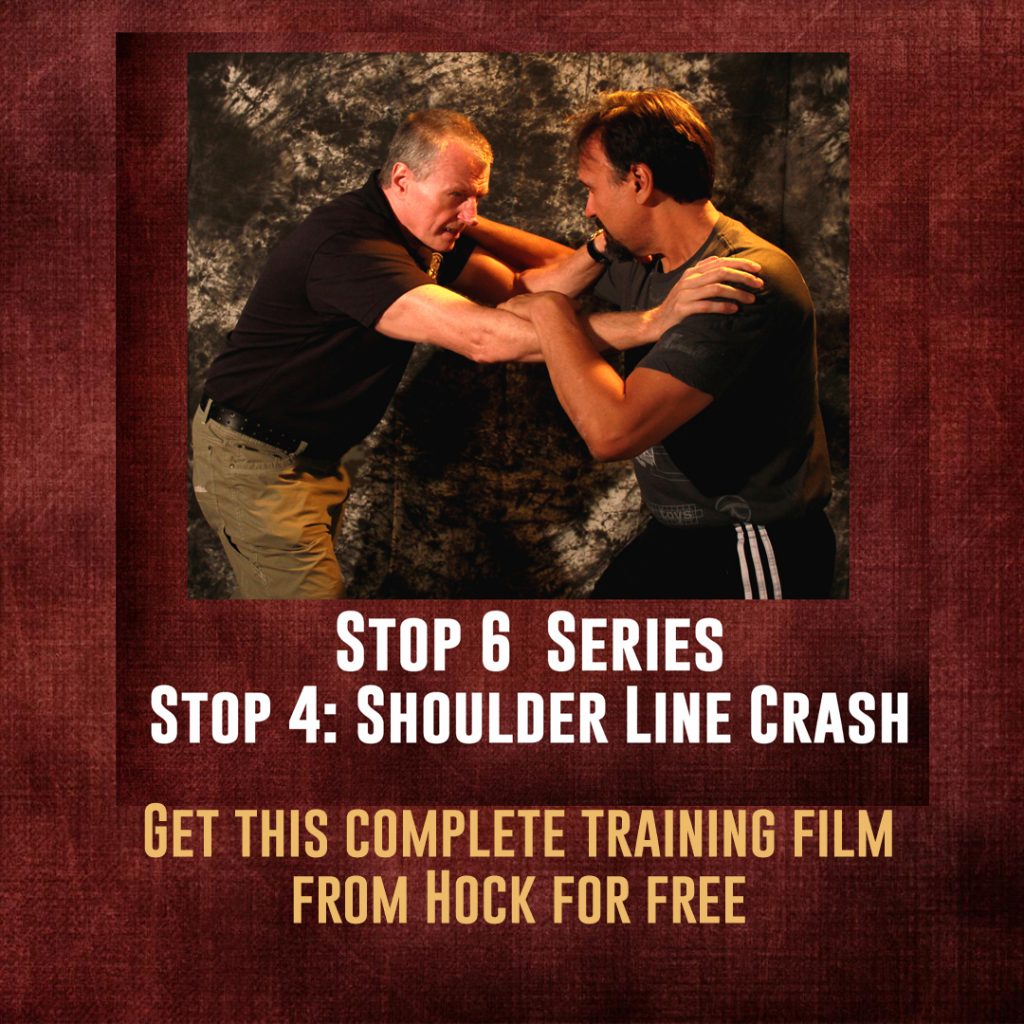Your “table setting” and “know your table” have big meanings, in the self defense shooting world. Ever shoot from a chair, behind a table at the live fire range? Not often I’ll bet. When done, the seated, range training set up, the “table is set” this way – it takes-makes the assumption that you are the “Lone Ranger,” seated alone, shooting an unidentifiable, abstract somebody (the paper target imagined threat) always shooting straight forward from your seat.
I still some see gun courses on film and in photos with people sitting at tables and drawing and shooting while seated, (even reloading there in the chair! And at times doing really awkward 360 checks while seated.) Or shooters fully stand up exposing most of their bodies. Does the table ever get flipped over in this ‘Lone Ranger’ model? Think about all the calibers out there and the fickle deflection angles and how some flipped tables might help.
But this essay is not just about flipping tables. Sometimes you can’t, but rather about all the probable table situations and responses. “Know your table and the table-setting” shooting training via the “Who, what, where, when, how and why” question checklist.
- The WHO questions. Who are you? Who else if any is at the table? Nearby tables? Who is the enemy?
- The WHAT questions? What is going on? Robbery? Domestic? Crazy guy? What kind of table? May it offer you some level of protection, even concealment. Shape? Heavy? Metal? Plastic? What’s on it? What kind of gun does the enemy have? What kind of chair are you in?
- The WHERE questions? Where is this happening? A home, restaurant, conference, meeting? Gun show? Trade-days? Thanksgiving dinner (don’t laugh!) Where exactly is this armed enemy? Where do you carry your pistol? In a booth – probably some 50% of the time you are in a booth not a table. Where is this table anyway? The table? Where are you seated? Is there space to do this between the table and the wall?
- The WHEN questions. When exactly should you shoot in this situation? Or not shoot at all? Flip a table? Stand up? Dive? Finish dessert?
- The HOW questions. How do you react? How close are you seated to the table for your draw? Will the chair move easily on the carpet? Maybe flip this table? How do you shoot around it? Will the table completely turn over? How often are you seated alone to flip a table over?
- The WHY questions. Why did you go there? Why are you still there. Why are you still seated? Why reload while seated? Why stay seated?
- Continue asking and exploring and answer these “Ws and H” quesions.
Set the real table with questions and answers. Hopefully in these live fire range classes, these samples of the “Ws and H” Questions checklist was-is mentioned in the opening lecture to introduce and remind the bigger problems of the table-setting shooting?
I do wonder, do the table-chair courses ever finish the live fire range segment with any of the best training experiences? Doing the simulated ammo situations with actors (just other attendees) in common makeshift table settings. (Sim-ammo is all I do.) Real, vital “shoot-don’t-shoot” decision making, interactive experiences.
Yes, you must shoot some live fire from the chair and table a bit. Yes. And then hopefully, in this ‘Lone Ranger’ range set-up, practitioners might practice a segment of oh…flipping tables over and shooting too, and also worrying about where Tonto is, and work on all the other probable things in simulated ammo situations, rather than completely ignore all the training of many other chair-table probabilities.
How do you set the table for table-related gunfights?
_____________________________
Watch full, free training films at Hock’s Combatives TV Channel, click here



